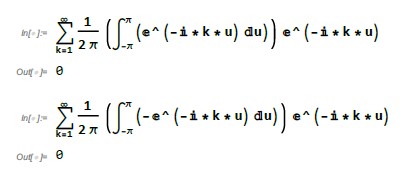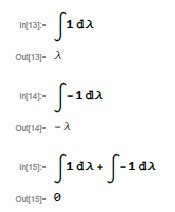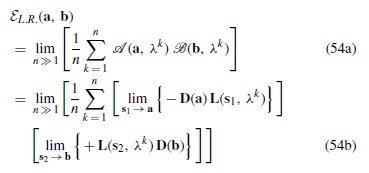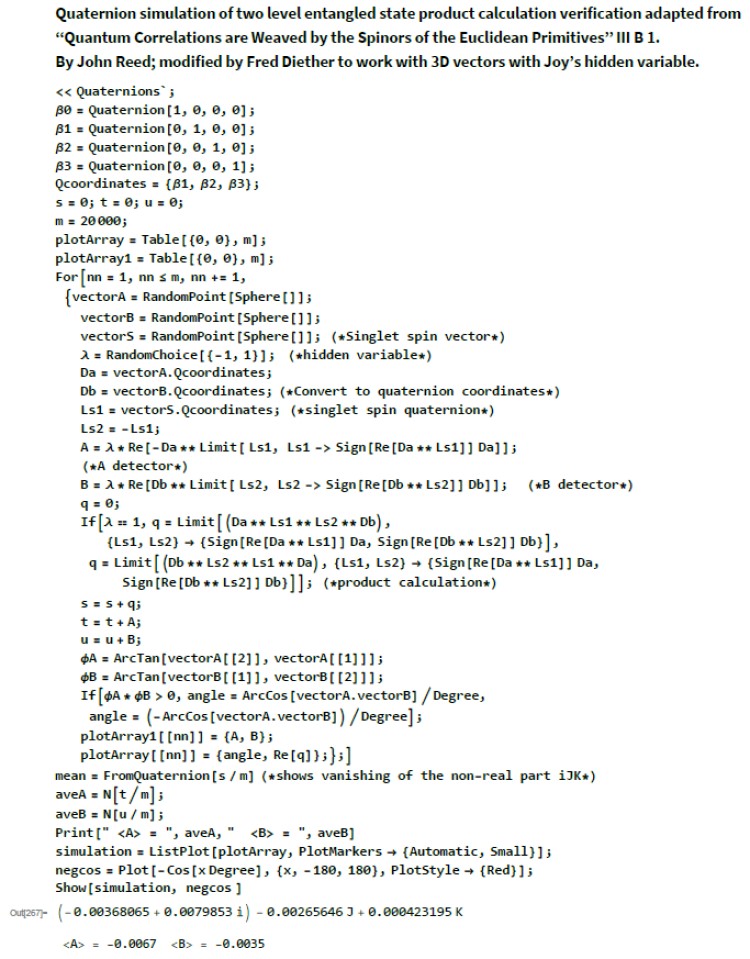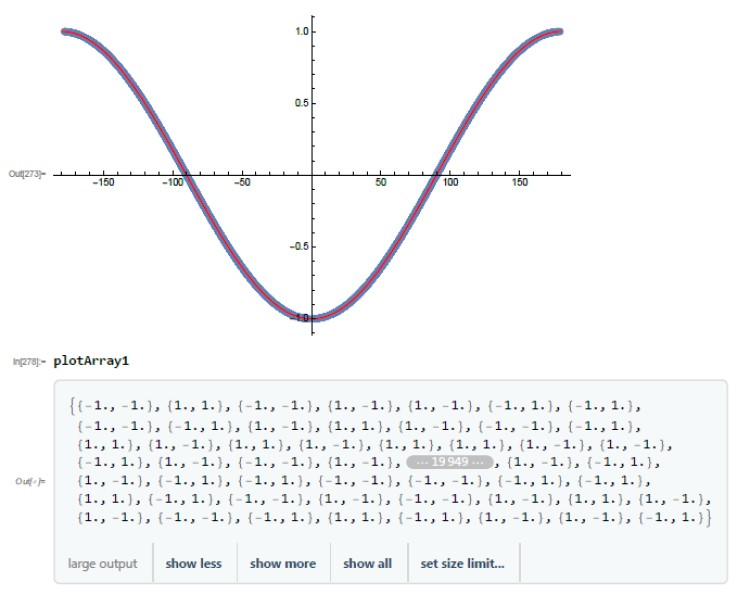https://arxiv.org/abs/2012.00719
I promised Gill that I would shred it to pieces so here we go. The first mistake they make is right before eq. (1) which is the same mistake Bell and the person on stackexchange make. B = -A only half of the time; the other half of the time B = A. So, the "proof" is only good half of the time? However, it doesn't matter because their eq. (1) is equal to zero. The integrand has two unspecified functions as a product. All we know is that they are either +1 or -1 so the product is always +1 or -1. So, the integral divided by 2pi is always +1 or -1. Which means that they are summing a bunch of +1's and -1's which converges to zero as N goes to infinity. Here is the equation in question,
Here is a simple Mathematica evaluation of it.

So, we will stop there for now to see if they want to present a new eq. (1) that might make some sense as far as producing a negative cosine curve.
.

